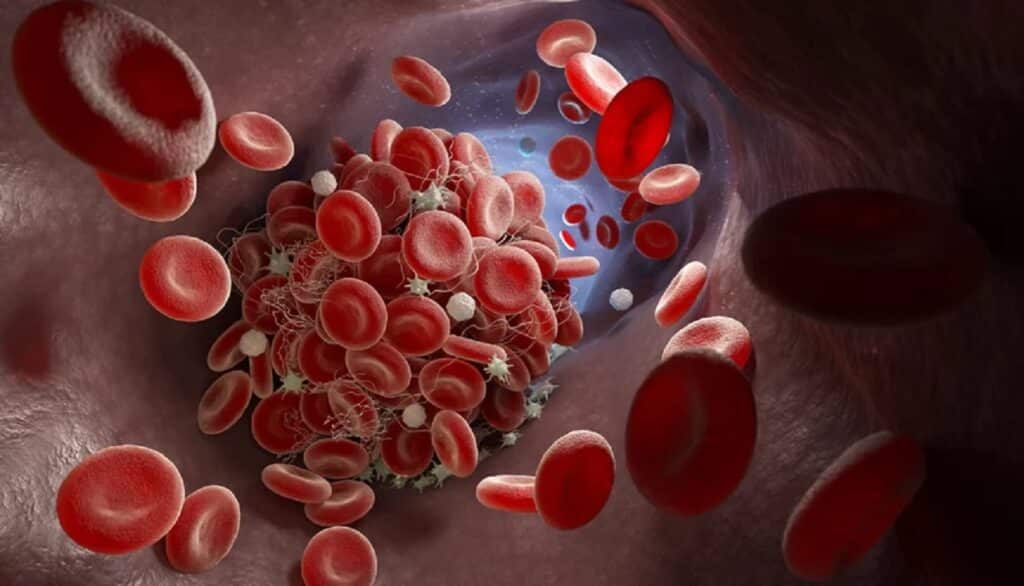Bears in hibernation and paraplegic people spend months or even years lying almost motionless. The risk of thrombosis is always present when a healthy person is bedridden; this paradoxical association still exists regularly.
An international research team led by Matthias Mann, Director of the Max Planck Institute of Biochemistry, and Tobias Petzold, a cardiologist at the Ludwig Maximilian University Hospital Munich, discovered a mechanism that prevents blood clot formation in brown bears and paraplegics. This discovery could open up novel therapeutic options.
It is a common scenario in many families: grandmother suffers a hip fracture, becomes bedridden for weeks, and faces an increased risk of a blood clot forming in a vein, which travels through the circulation and could block a lung vessel.
Immobility is a significant risk factor for venous thromboembolism, which can have fatal consequences. Patients with spinal cord injuries that are not in the acute phase, on the other hand, do not have the same increased risk of thrombosis. Brown bears sleep almost motionless for months in winter without being at risk of this condition. This raises the issue of why people with spinal cord injuries do not have the same increased risk of thrombosis as others.
The team began with two trips to central Sweden, equipped with GPS transmitters that tracked their location, sedated for blood sampling, and then released back into the wild. Cardiologist Petzold and his colleagues analyzed the samples in a mobile laboratory within three to four hours. The question was whether brown bear coagulation systems differed between hibernation and summer activity.
Cardiologist Manuela Thienel shared that the study’s authors said, “But we didn’t find any relevant differences.” Platelets’ interaction with immune cells was slowed. The researchers took some of the blood samples back to Munich, where they examined the platelets more precisely in their laboratory.
Cardiologist Petzold said, “It turned out that in the hibernating brown bear body, the interaction between platelets and immune cells was slowed down, which explains the absence of venous thrombosis.”
The exact mechanisms were later discovered in paralyzed patients and volunteers in a three-week bed rest study conducted by the German Aerospace Centre and the National Aeronautics and Space Administration.
Medical researchers recruited the expertise of Matthias Mann and Johannes Müller-Reif from the Max Planck Institute of Biochemistry in Martinsried to understand the molecular mechanism behind this protective activity.
Their method, mass spectrometry-based proteomics, is designed to answer such issues by searching for changed proteins without knowing which proteins are implicated. According to Matthias Mann, their strategy applies to all organisms and models so long as DNA sequencing data is available.
They were able to unravel the molecular mysteries behind their remarkable capacity to avoid thrombosis during hibernation by identifying and measuring nearly 2,700 proteins in their platelets.

The study discovered 71 proteins were elevated during hibernation, and 80 were downregulated compared to summer activity. The revelation that heat shock protein 47, or HSP47, is downregulated 55-fold in hibernating bears compared to active bears highlighted the essential role it could play in preventing thrombosis.
The researchers demonstrated that downregulation of HSP47 occurs in a variety of mammalian species, including humans, brown bears, and pigs, indicating an evolutionarily conserved mechanism for thrombosis avoidance.
In immobilized acute patients, blocking HSP47 with an appropriate chemical may reduce the risk of venous thrombosis. However, small compounds that can block HSP47 are not acceptable for possible human usage.
Researchers are now looking for suitable substances on their own, potentially opening up new treatment options for patients whose lives are at risk.
Journal Reference:
- Thienel, M., Müller-Reif, etal. Immobility-associated thromboprotection is conserved across mammalian species, from bears to humans. Science. DOI: 10.1126/science.abo5044
